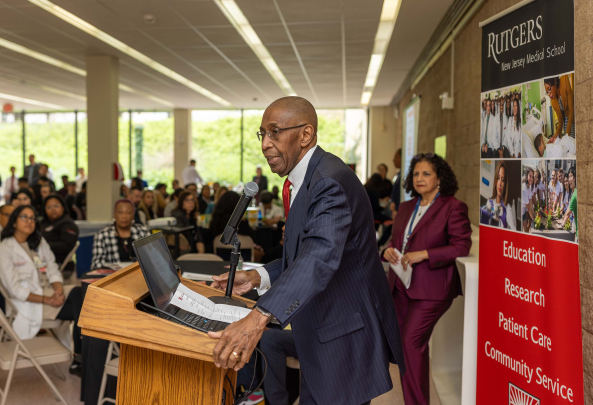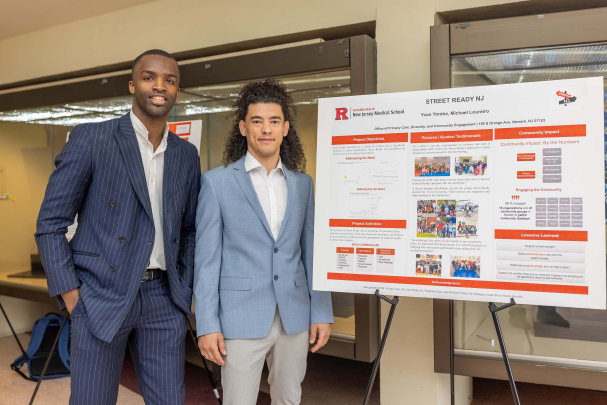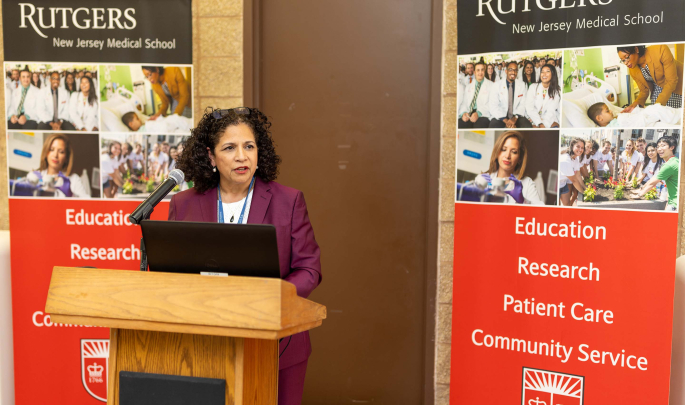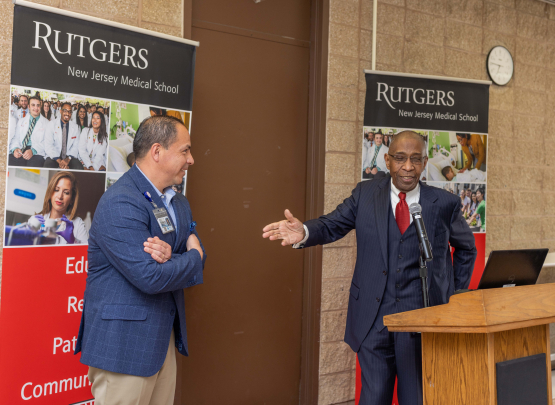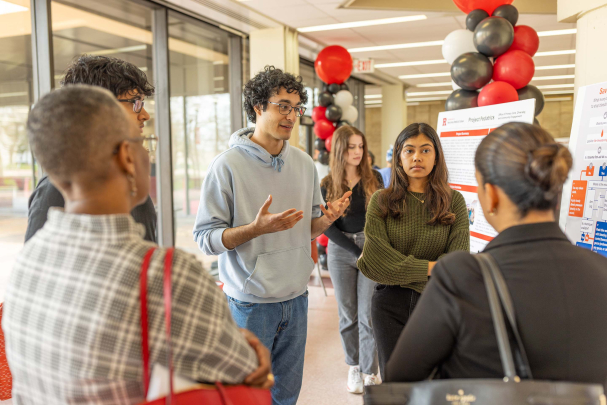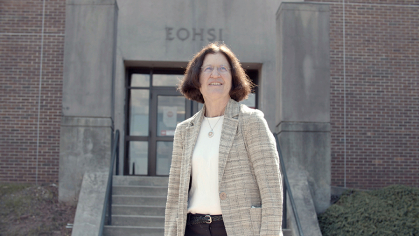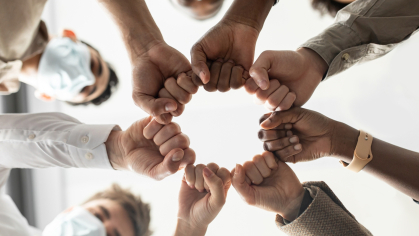Explore, Serve and Learn: Rutgers New Jersey Medical School Opens Its Doors to the Community
An inaugural symposium spotlights community engagement and creates increased dialogue in the medical school’s home of Newark
Rutgers New Jersey Medical School has a history of serving the residents of Newark through programs based on ideas and needs that come directly from the community.
In April, the medical school launched its inaugural Community Engagement Symposium as a way to exchange ideas with the citizens of Newark.
Students, staff, faculty and community leaders shared resources at this one-day, invitation-only event, hosted by the Office of Primary Care, Diversity and Community Engagement (PCDCE). The team hopes to make this an annual celebration of service learning and connection with the greater Newark area.
Around 140 attendees gathered in the medical school’s foyer. After lunch, an hour of speeches included three presentations.
Imran Khawaja (MD ’25) shared how sustainable farming, developed in partnership with Berringer High School, could educate and engage high school students to address food insecurity in Newark.
Yvan Yomba (MD ’25) and Dojo Martial Arts owner Michael Loureiro spoke about Street Ready, which they founded to teach conflict resolution, self-defense and first aid.
And finally, Vivian Cueto presented the work of the Screening Access of Value for Essex (SAVE) program, which is funded by the New Jersey Cancer Education and Early Detection Program. Initiated in 1997, the SAVE program brings cancer education, prevention and screening to the uninsured, low-income community of Essex County.
To reach those with the most need, SAVE partners with University Hospital Mammography in Motion program. A new state-of the art mammography bus, supported by the Connie Dwyer Foundation, the Healthcare Foundation of NJ and the University Hospital Foundation, is providing cancer screenings to underserved communities in Newark and Essex County.
Following the presentations, members of the audience visited more than three dozen stations spotlighting student initiatives. The goal: to connect, accelerate and amplify siloed projects both inside and outside the school.
“Our number one job is preparing future physicians,” said organizer Carmen Guzman-McLaughlin, senior director of administration at NJMS. “We’re quickly evolving but have deep roots. The symposium made new connections while reminding us of our history. Students palpably appreciated that. Folks also wanted to ask questions and discuss how to elevate the work.
“It was great to hear from the community partners too. A lot is emerging about social determinants of health that we may not be immersed in yet.”
Advancing NJMS’s Service Traditions
Robert L. Johnson, dean of the medical school, co-founded the event and called it “an opportunity to celebrate our relationship with the citizens of this diverse area, which faces complex social and economic challenges. The team behind the symposium is the embodiment of our community commitment. After the future Rutgers School of Medicine is formed, the Newark campus will continue this commitment to serve its community and will be even better.”
Johnson collaborated with Ana M. Natale-Pereira, an associate professor of medicine and associate dean of PCDCE. She is an alumna (MD ’96 and SPH ’05), and the former chief resident at University Hospital. Natale-Pereira sees the symposium’s knowledge exchange as a new facet of the school’s service traditions. For example, Johnson helped launch the Student Family Health Care Center after the 1967 Newark uprising. The Student Family Health Care Center – solely operated by medical students with faculty mentors – provides subsidized care for medically underserved residents.
NJMS turned its volunteering values into required coursework in 2015. All medical students in first and second year – around 174 per class – must complete 20 hours of Community Engaged Service Learning (CESL), though many continue and log more than 100 hours.
Natale-Pereira encourages them to go beyond service delivery – such as participating in health fairs and educational sessions – to more in-depth interactions with Newark residents.
“We want students to learn about the challenges affecting our community, increase their cultural humility and appreciate the incredible resilience of our patients,” she said. “Service learning leaves them better prepared to enter their clinical years.”
Engaging with the Newark Community
As the fall semester starts, a the CESL fair highlights all the ongoing service projects for the medical school’s incoming first-years and encourages them to participate. Student leaders welcome recruits to the programs, including partnering with shelters, K-12 schools, health departments and organizations centered on faith or community in the greater Newark area. Many also collaborate with University Hospital and its Office of Community Engagement.
“All provide amazing opportunities to explore, serve and learn,” Natale-Pereira said. “It’s critical for students to hear directly about issues like housing struggles, and the migration of people and its impact on resources. We can teach these themes, but community leaders can share in a much deeper and more personal way.”
Attendee Keith DaCosta called the symposium “a must-attend event and a fantastic platform to showcase the students’ incredible work.”
As the executive director of NJMS partner Caresparc Community Connections, DaCosta is familiar with their volunteer efforts at his nonprofit, which promotes health equity and positive public health outcomes. But the symposium revealed the breadth and variety of NJMS’s efforts.
Others applauded the service learners’ determination and innovation, including Rodrigo Cardoso De Godoi, president of the Newark nonprofit Mantena Global Care.
“Amid the barrage of negative headlines, their dedication, creativity and compassion shine brightly, offering hope and inspiration for a better tomorrow,” De Godoi said.
Interested in getting involved? Contact the PCDCE office, as it will help you connect with programs, or participate in actively ongoing activities.
